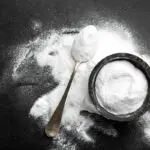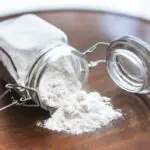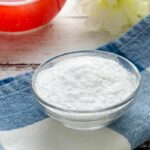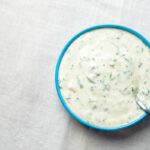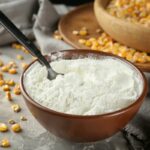In the modern day, there are a lot of reasons why you might want to avoid gluten. Whether you suffer from celiac disease, or you’re just looking to cut it out of your diet for personal reasons, one thing you’ll realize is quite how much gluten is in everything!
Baking powder is one of those ingredients that are in a lot of the food we love! From delicious sweet treats to savory delights, it’s a vital component of the baking process, and because of this, you might be wondering if it’s gluten-free.
If this sounds like you, then you’ve come to the right place! In this article we’re going to be taking a look at baking powder and whether or not it’s suitable for a gluten-free diet.
What Is Baking Powder?
Baking powder is what we call a dry chemical leavening agent. It is one of the most important things when baking as it helps baked foods rise when in the oven.
Baking powder stops baked goods from coming out of the oven all hard, or flat, and allows for the signature fluffy texture we love.
It does this by releasing carbon dioxide that is already inside your baking creation. This carbon dioxide forms small bubbles at the surface of the food you’re baking, and allows its body to rise.
What Is Baking Powder Made From?
Alright, so that’s what baking powder does – but what is it actually made of?
There are different types of baking powder that you can find, but the most common form consists of a combination of an acid, a starch that helps to absorb moisture and baking soda.
Baking soda, or sodium bicarbonate comes from natural sources and is also known as sodium bicarbonate.
It is an alkaline compound, that when combined with acid will begin to produce carbon dioxide – and this is why it’s so important in the baking process.
It’s important to note that bicarbonate soda is gluten free! However, that’s not to say that the other ingredients in baking powder are, and the one you’ll need to watch out for is the starch that has been added to the mixture.
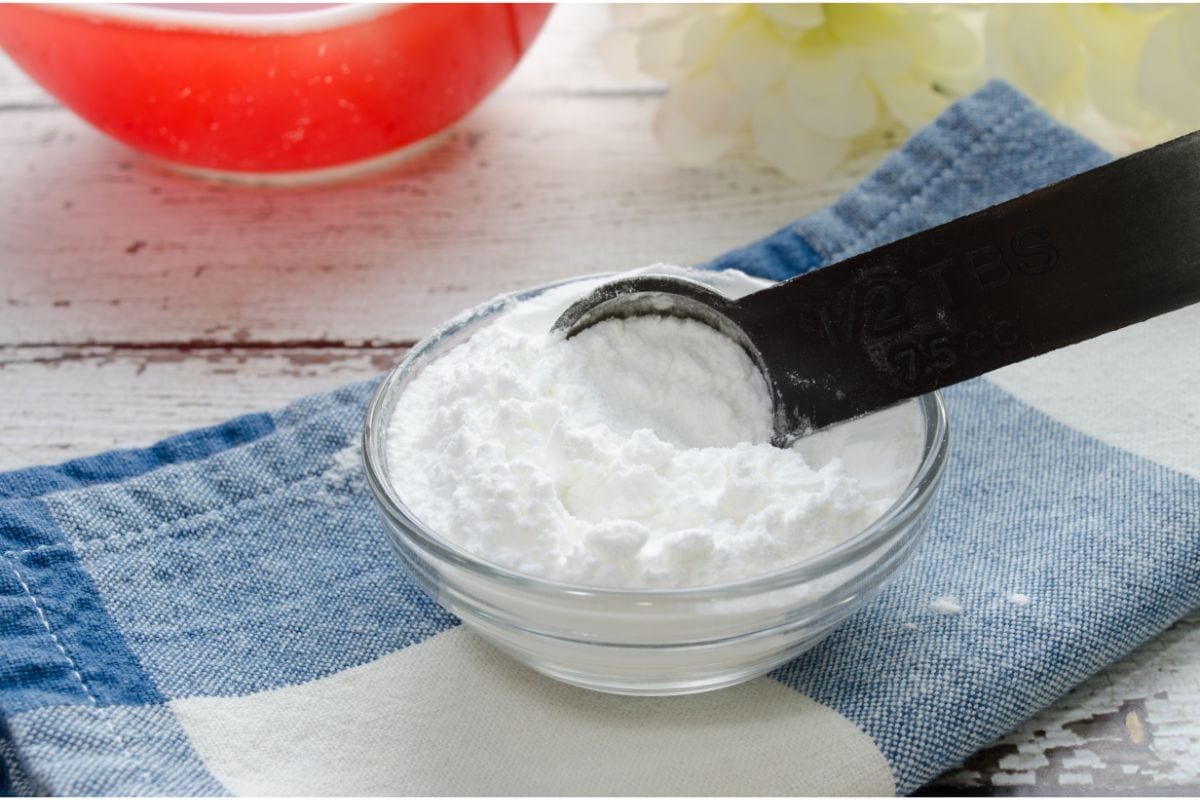
Does Baking Powder Have Gluten?
The starch that you’ll find in baking powder (used primarily to help absorb moisture during the baking process) is often either corn starch or potato starch.
Corn starch is a type of starch derived from the starchy part of a corn kernel, and potato starch is extracted from whole white potatoes.
The good news is that both of these are gluten-free, but the problem is that they’re not always the only thing added.
The thing you’re going to need to watch out for is wheat starch. This is sometimes used by brands in the place of corn starch or potato starch and is certainly not gluten-free.
Make Sure To Read Ingredients Carefully
Because of this, you’re going to need to check the ingredients of the baking powder brands you’re considering buying, and make sure you’re buying gluten-free baking powder.
Check the ingredients list to make sure that they contain either potato starch or corn starch. Wheat starch here is the real alarm bell, but you’ll also have to double-check any other kinds of starch that you don’t recognize.
Certified Gluten-Free Baking Powder
Because so many people in this day and age are encountering issues with gluten products, there are some organizations that can help you check if a product is officially gluten free baking powder.
When shopping online or in stores, you’re going to want to search for an official gluten-free logo to check if the product is certified gluten-free.
In the United States of America, the best one to look out for is the NSF logo. This stands for the National Sanitation Foundation, an organization established in 1944 as a way to help standardize good food practices across the country.
How To Find The NSF Gluten Free Logo
So what does the NSF gluten-free logo look like? It’s easily recognizable, just look for a circular blue logo with the letters NSF in the middle, and the gluten-free banded at the bottom.
If you see this on any product (including baking powder) that you’re looking at, then you’ll know that it doesn’t contain wheat starch or any other kind of ingredient that contains gluten.
Are The Acid Ingredients In Baking Powder Gluten Free?
The most common acid you’ll find in baking powder is cream of tartar.
Cream of tartar comes as a white powder and is most commonly used in all types of baking goods, most notably to stabilize egg whites in cakes, as a way to stop sugar crystallization, and as the central ingredient that activates baking powder.
The good news is that cream of tartar is completely gluten-free and won’t pose any risk to you.
If for whatever reason, you’re unable to consume cream of tartar, there are a few alternatives available including lemon juice (gluten-free,) white vinegar (gluten-free,) and buttermilk (gluten-free).
That said, you’ll need to make sure to check the products you’re buying to make sure they don’t contain any additional gluten ingredients.
Final Thoughts
We’d generally advise you to double-check all of your baking ingredients before purchasing them. For example, gluten-free flour, chocolate, icing, and anything else you might need.
Thankfully in this day and age, we’re able to be more selective about the baking products we include in our creations, and gluten-free certifications help us to choose quickly.
To conclude, we can safely say that most baking powder brands are gluten-free, with the exception of those that use wheat starch.
As long as you carefully check everything you’re putting into your baked goods, you’re going to be safe from gluten.
We wish you the best of luck in your future culinary creations and hope that everything works out well for you!

